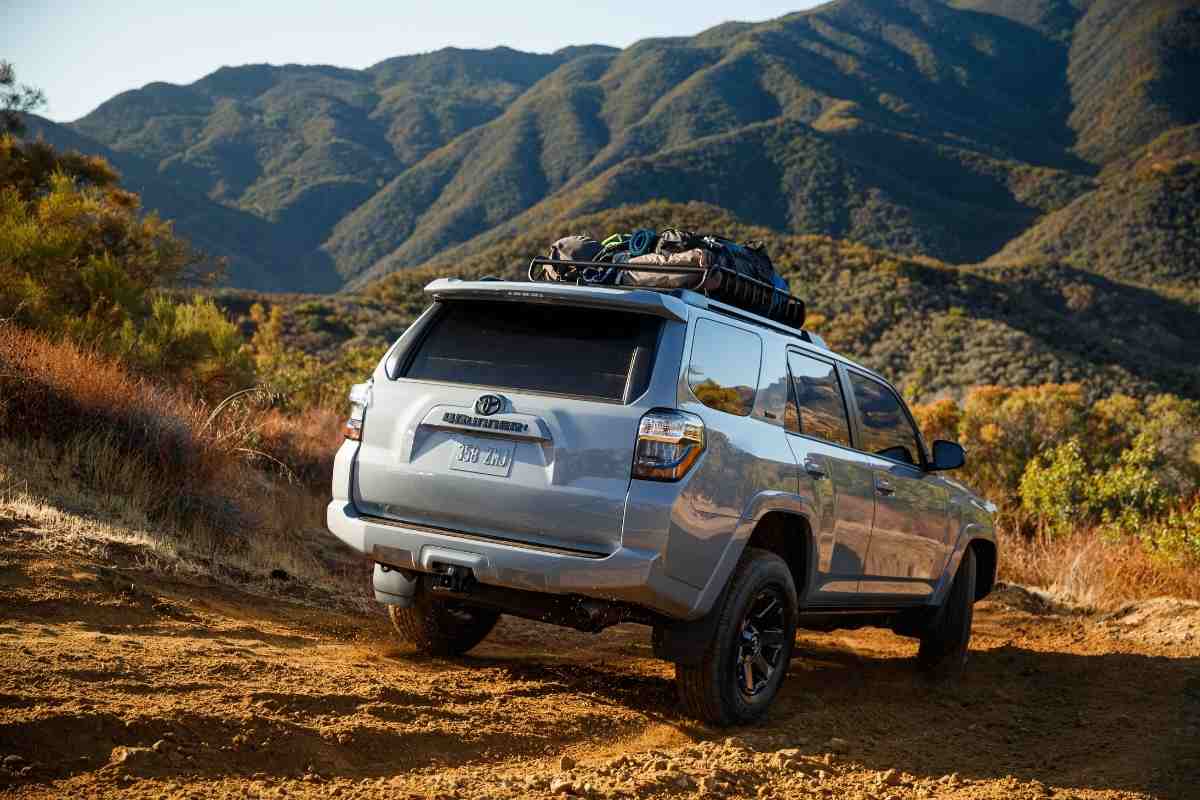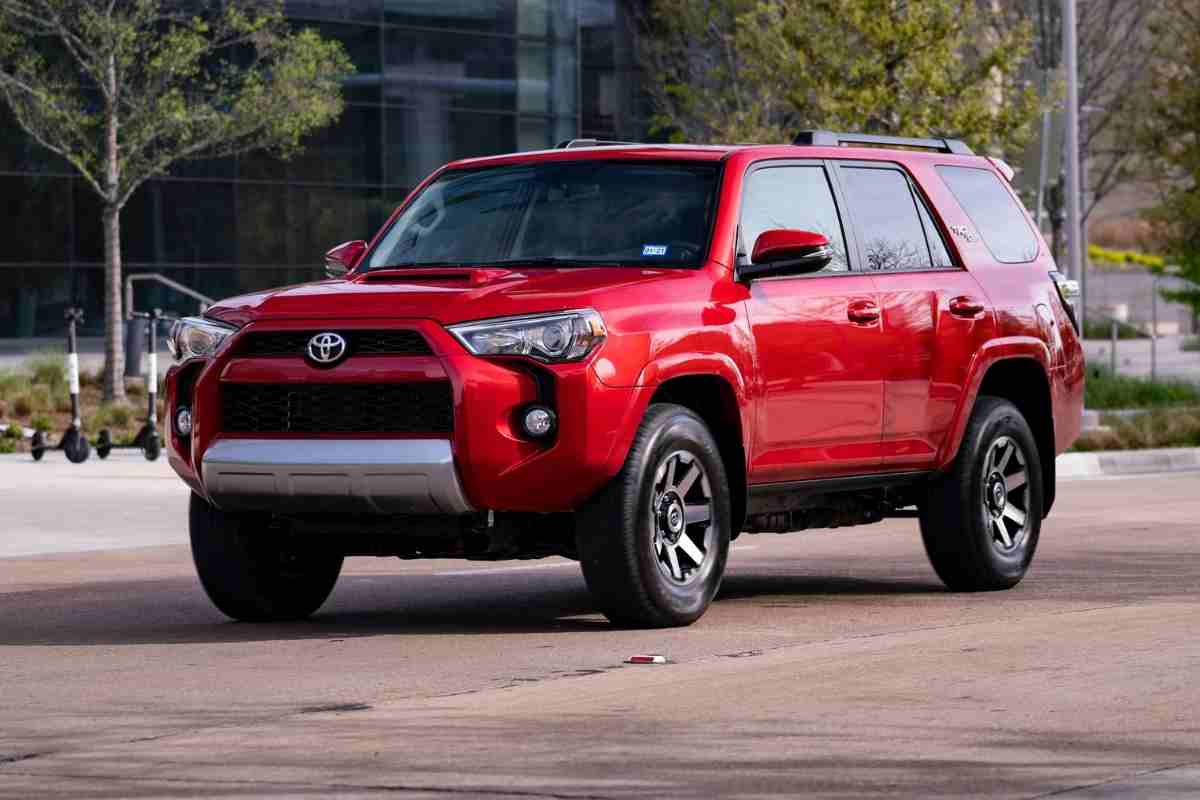FJ Cruiser vs 4Runner: Which One is Better for Overland Adventures?
Anyone who adventures and explores knows that the vehicle you have greatly impacts the limits to which you are able to go. A consumer-grade sedan does nothing but get you from point-A to point-B, which is why you need a gnarly SUV, like a 4Runner or FJ Cruiser, to take you off the beaten path.
Though they are similar under the hood, the Toyota 4Runner out-ranks the FJ Cruiser. The FJ is a fun and quirky vehicle, but the 4Runner is a better lifestyle truck that is fully equipped for the most rigorous overland terrains.
Your needs and desires will ultimately determine which SUV is best for you, but we’ll give you everything you need to know about how these two Toyotas stack up next to each other.
You Can’t Go Wrong
Both FJ Cruisers and 4Runners have a rich history of adventure and reliability. Because of this, they are both awesome options.
FJ Cruisers were first built in 1950 as Japan’s answer to America’s Jeep and Great Britain’s Land Rover. In the first 30 years of its life, FJs were used in military operations and served as ambulances and cargo trucks. Early FJs were not heralded for their comforts or luxuriousness but were notable for their reliability, hardiness, and off-roading capabilities. These characteristics served as the basis for the 21st-century FJ Cruiser, which reflects the durability and ruggedness of the original FJs.
The Toyota 4Runner was introduced in 1984 as a slight variation to the Toyota Hilux– Toyota’s international, indestructible pickup truck. The 4Runner is built on the chassis of the Hilux in an effort to integrate a truck-based SUV into the US market. Since the 80s, the 4Runner has evolved into a formative on- and off-roading sports utility vehicle.
In its 2021 line, the 4Runner comes in nine distinct editions. All of which are generally capable of the same overlanding feats, but increase in the fanciness of their features and accouterments.
On the inside, FJs and 4Runners are very similar. Here’s how the two models stack up; each have:
- 4-liter V6 gas engines
- 5-speed automatic transmission (though the FJ comes in a 6-speed manual)
- A four-wheel drive train
- 5 person capacity
- 4,700-pound towing capacity
The two models are even built on the same chassis. These features make them equally reliable vehicles. What’s more, these similarities mean that one is not greater than the other in terms of overland capabilities. By their design, both the FJ Cruiser and the 4Runner are excellent off-roading vehicles.
Pricing
FJ Cruisers
With an FJ, you not only get an exceptional off-roading SUV but an undeniably cool, unique look. The modern FJ manages to be both urbane and funky, and rugged and daring. Not to mention the quirky colors it’s available in. It’s a shame that they don’t make it anymore.
The Toyota FJ Cruiser was officially discontinued in the United States in August of 2014 (not because of faults, but of declining sales after the 2008 recession). Because of its halted production and prowess as an SUV, it is highly sought after and therefore expensive. You pay a premium for rarity. An older (2007-2010) FJ goes for around $20,000, but then you are likely to inherit high mileage as well as the wear and tear of a 14-year-old car.
Newer FJs (post-2010) can run anywhere from $20,000-$43,000. This is a significant price gap for a 4-year age difference. The price determination comes down to the condition of the vehicle, how many miles are on it, and if the dealer knows the value of their product. The rarity and quality of the car increase the price significantly, and a smart dealer knows this.
You can always outsmart a dealership or private seller by comparing the prices of similar models to the vehicle you are considering. Additionally, resources like Kelley Blue Book can help you determine an accurate value of the car based on its exact features. That said, note that the demand is high and the supply is low, so you will only be able to negotiate so much.
4Runners
On the other hand, 4Runners themselves are not inexpensive, despite how common they are. That fact comes down to the demand for them. Not only are 4Runners renowned overland vehicles, but recent trends have also shown that they’re just as cool on the streets.
Coolness aside, the demand is high because 4Runners are safe, efficient, and cheap to maintain. That makes new 4Runners great family cars, and older 4Runners perfect vehicles for teens and first-time drivers. Their rugged look is easy to beef up with aftermarket mods and lift kits. Some might argue that an older 4Runner with a roof rack and grill guard has more appeal than a new, sleek 4Runner. But the year and body style don’t have too much effect on the cost of the vehicle.
A 2021 Toyota 4Runner starts at $36,590. 2021 4Runners top out at around $50,000 with the TRD Pro edition. Likewise, a 2005 4Runner with 63,000 miles on it is currently selling for $26,000, and a 2019 TRD Pro with 8,000 miles is going for $59,900. Between the low mileage, as well as the aftermarket mods on the 2019 TRD Pro, these 4Runners are hot commodities.
The high-class features of the new 4Runners are the biggest contribution to the cost. Anymore, 4Runners are signs of status just as they are excellent off-roading machines. 5th generation 4Runners also have more safety features than their predecessors, like backup cameras, on-road lane and pedestrian sensors, as well as tech advancements like cellular and wi-fi connectivity, and remote start.

If the off-roading capabilities are what you’re after in particular, you might also consider an older, 4th generation 4Runner. Because of the 4Runners origins as an off-roader, a 16-year-old 4Runner is just as capable as one built 16 months ago. Again, the biggest difference lies in the details of the design, rather than the machine.
One thing that can change the price of a 4Runner, as well as an FJ, is the mileage the vehicle has. An SUV with close to 200,000 miles is going to cost less than one that only has 50,000 miles. This is because, overall, fewer miles equates to a younger vehicle, in a way.
A V6 Toyota engine, the kind that the FJ and 4Runner both have, will last up to 300,000 miles. If the car has been well taken care of, it can safely last for over 300,000 miles.
Mileage not only affects the engines, but also the integrity of the frame, axles, and electronic parts. Frequent maintenance in the early years of ownership can deter, or at least delay, the effects of age.
Specs
Here are some of the most important specifications of both models:
| 4Runner | FJ Cruiser | |
| MPG | 16 city/19 highway | 16 city/20 highway |
| Fuel Tank Capacity | 23 gallons | 19 gallons |
| Horsepower | 270 RPM | 260 RPM |
| Torque | 278 lb-ft | 271 lb-ft |
| Wheel Size | 20″ x 7.5″ | 17″ x 7.5″ |
| Wheel Base | 109.8″ | 105.9″ |
| Rear Seat Leg-room | 32.9″ | 31.2″ |
| Cargo Space | 46.3-47.2 ft^3 | 27.9 ft^3 |
| Turning Diameter | 37.4″ | 40.7″ |
| Front Suspension | Double Wishbone | Double Wishbone |
| Rear Suspension | Multi-link | Multi-link |
| Ground Clearance | 9.6″ | 9.6″ |
| Approach Angle | 33 degrees | 34 degrees |
| Departure Angle | 26 degrees | 30 degrees |
Their outsides and packages differ, though. FJs come in rear-wheel and four-wheel options, while 4Runners come in four- and two-wheel options.
Between the 4Runner and the FJ, only the latter is available with manual transmission. Being able to drive “stick” is an invigorating and useful skill. While you can get on just fine overlanding with an automatic transmission, using a manual transmission can be more exhilarating and is less likely to overheat than its automatic counterpart.
Off The Trail
The biggest interior difference is that the 4Runner is roomier. A new 4Runner not only guarantees space to haul equipment and friends but also a vehicle that will last for years to come. Only the 4Runner has third-row seating and a roomier second-row seating in its body in its 5th gen iteration.
FJ Cruisers have a body length of about 183 inches but have significantly less interior room. FJs only have two rows, and the leg-room in the backseat is not ideal. Accessed by a suicide door, the FJ’s backseat does not provide ample space for adult passengers or children’s car seats.
Some FJ owners have determined that the ride is loud and the noise cancellation is poor. This might be unattractive if you have a lengthy commute, rough roads in your area, or are simply sensitive to noise. On the other hand, if the FJ is attractive to you because it is a rugged, hardcore SUV meant for trailblazing, then maybe the noise is part of the appeal. The esteemed Jeep Wrangler faces this same problem (without the integrity of the Toyota pedigree).
4Runners are certainly the nicer of the two when it comes to interior insulation, technological gadgets, and luxury touches. The most notable difference between the $36,000 SR5 4Runner trim and the $50,000 TRD Pro is the kind of leather you can choose. Most of the 4Runner packages have the same safety, performance, and capability features. Fancy aftermarket running boards and roof racks are available to all models, not to mention available through third-party mod companies.

Because the FJs are no longer in production, there are no pre-purchase customizations; what you see is what you get. On the other hand, their high demand and growing popularity mean that there are a wide array of aftermarket parts to add to your SUV. Any upgrades you’d like to make to your FJ would need to be done yourself or buy a mod company, rather than a Toyota dealership–which actually gives you more options to make your FJ your own.
